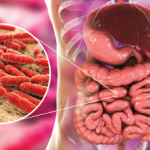The problem I have with studies like this is how they will translate to caring for our patients. The literature is replete with reports of successful therapeutic interventions in experimental models of rheumatic diseases that fail in humans. That, however, is why we persevere.
Stressed Out
What does social rejection have to do with inflammatory/immunologic responses? The psalmist(s) wrote of this (71:9) as have balladeers, song composers, and others. What might be the mechanism? And, might this be relevant to rheumatic disease?
Oxytocin promotes benevolence, generosity, and trust. I hadn’t known that oxytocin had a “touchy-feely” reputation, that it was perceived as an enhancer of romance, that it was used with couples counseling, that military and police were supposedly interested in its potential to change behaviors of criminals or enemies, and that it was sold on the Internet as “liquid trust.”4 However, subjects receiving the hormone before playing a game with economic consequences behaved more altruistically to members of their team and with “defensive aggression” to outsiders.5 So, oxytocin plays an interesting role in interpersonal behavior.
Another study found that social stress—impromptu speaking, publicly solving difficult math problems (those would certainly stress me!)—was associated with increases of a soluble receptor for tumor necrosis factor–α (sTNF-αRII) and interleukin 6, that brain regions which process rejection-related distress and negative affect (the dorsal anteriol cingulate cortex and anterior lingula) showed greater activity in neuroimaging, and that this correlated with elevations of sTNF-αRII.6 Thus neural responses to social threat/rejection were associated with increased inflammatory response when individuals experienced acute social stress. Might these observations suggest, at least in part, some understanding of how stress might affect our diseases?
However, I’m reminded of the imaginative studies of David Trentham and colleagues from some time ago.7 They examined stress in murine collagen-induced arthritis; the stress was exposure of the mice to a cat! These experiments found that stress notably suppressed disease. These apparently conflicting observations were distressing.
From this I learn that acute and chronic stress are not good, unless you may be one of Dr. Trentham’s arthritic mice; they lead to neuro-immuno-endocrine changes which are just beginning to be examined; and oxytocin is an interesting substance with possible roles in stress and rheumatic disease. So I asked my good friend Bob Lahita, who probably knows neuro-imuuno-endocrine aspects of rheumatic diseases better than anyone, to help me put this all together. (Bob told me there is even a neuroimmunoendocrine society!)
